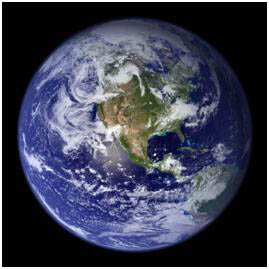My next blog was going to be about granite landforms but while researching the topic I felt that it was important to have a quick blog about weathering and erosion, as these are important processes that affect different types of rocks in different ways which ultimately shapes the landscape.
Weathering is different to erosion. Weathering is the breakdown of rocks at the Earth’s surface, by the action of rainwater, extremes of temperature, and biological activity. It does not involve the removal of rock material.
There are three types of weathering, physical, chemical and biological.
1. Physical weathering is caused by the effects of changing temperature on rocks, causing the rock to break apart. Physical weathering happens especially in places where there is little soil and few plants grow, such as in mountain regions and hot deserts.
The process is sometimes assisted by water. There are two main types of physical weathering:
- Freeze-thaw occurs when water continually seeps into cracks, freezes and expands, eventually breaking the rock apart.
- Exfoliation Occurs in hot, dry climates. The outer layer of the rock is heated by the sun during the day, causing it to expand, during the night, as the temperature drops, the rock contracts. This constant expanding and contracting eventually leads to the outer layers of the rock peeling away, leaving behind them rounded rocks and dome shaped outcrops.
How does it occur?
Either through repeated melting and freezing of water (mountains and tundra) or through expansion and contraction of the surface layer of rocks that are baked by the sun (hot deserts).
2. Chemical weathering is caused by rain water reacting with the mineral grains in rocks to form new minerals (clays) and soluble salts. These reactions occur particularly when the water is slightly acidic and occurs more rapidly in damp warm climates. Chemical weathering (especially hydrolysis and oxidation) is the first stage in the production of soils.
How does it occur?
There are different types of chemical weathering, the most important are: Solution – removal of rock in solution by acidic rainwater. In particular, limestone is weathered by rainwater containing dissolved CO2, (this process is sometimes called carbonation). Hydrolysis – the breakdown of rock by acidic water to produce clay and soluble salts. Oxidation – the breakdown of rock by oxygen and water, often giving iron-rich rocks a rusty-coloured weathered surface.
3. Biological weathering is where living organisms contribute to the weathering process such roots growing through small cracks in rocks, organisms burrowing in to rocks or tiny bacteria or algae breaking down rocks for nutrients.
Erosion is the process by which soil and rock particles are worn away and moved elsewhere by wind, water or ice. Weathering involves no moving agent of transport. Erosion and the transportation of materials can occur through four key processes:
Gravity – for example landslides, rock falls, mudflows and soil creeps.
Water – sediment transported by rivers and seas.
Wind – soil, fine dust and small pebbles transported by the wind, often occurs in very dry climates.
Ice – as glaciers move slowly down hillsides they transport rocks through plucking and abrasion.
I did think that if possible, a practical demonstration type lesson would be good for teaching this but I wasn’t sure where to start. The Geological Society has a ‘Teacher’s Zone’ with lots of ideas for practical experiments and resources. They seem quite science based but it would perhaps be a good opportunity to link up with teachers in other subjects. With some planning this topic could be taught at the same time in science and geography. This would reinforce the learning for students, allowing students to feel more confident and it would also demonstrate to students how subjects overlap.
http://www.geolsoc.org.uk/ks3/gsl/education/resources/rockcycle/page3449.html
Another idea to aid teaching and learning would be to set an activity for students to draw their own cartoon of weathering and erosion processes, similar to the idea used for teaching the rock cycle.



